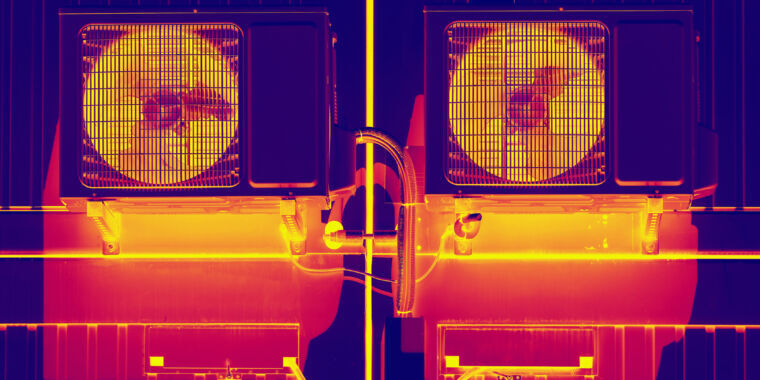Nine states are teaming up to accelerate adoption of this climate-friendly device.
Death is coming for the old-school gas furnace—and its killer is the humble heat pump. They’re already outselling gas furnaces in the US, and now a coalition of states has signed an agreement to supercharge the gas-to-electric transition by making it as cheap and easy as possible for their residents to switch.
Nine states have signed a memorandum of understanding that says that heat pumps should make up at least 65 percent of residential heating, air conditioning, and water-heating shipments by 2030. (“Shipments” here means systems manufactured, a proxy for how many are actually sold.) By 2040, these states—California, Colorado, Maine, Maryland, Massachusetts, New Jersey, New York, Oregon, and Rhode Island—are aiming for 90 percent of those shipments to be heat pumps.
“It’s a really strong signal from states that they’re committed to accelerating this transition to zero-emissions residential buildings,” says Emily Levin, senior policy adviser at the Northeast States for Coordinated Air Use Management (NESCAUM), an association of air-quality agencies that facilitated the agreement. The states will collaborate, for instance, in pursuing federal funding, developing standards for the rollout of heat pumps, and laying out an overarching plan “with priority actions to support widespread electrification of residential buildings.”



It depends on your climate zone… most people piling on the insulation bandwagon live in really cold climates. In more moderate climates, insulation makes your house is hot in the summer, which means you need to run the air conditioning. I don’t run air conditioning in the summer because our home is naturally cool. There are more summer months that winter months; so there are trade offs and reasons for different construction decisions.
Insulation doesn’t just keep heat in for the winter.
It keeps heat out for the Summer.
A lack of ventilation can cause buildings to overheat but anyone who seals up a building without adding a proper HVAC is a cowboy.
You can add insulation without reducing ventilation. Do it.